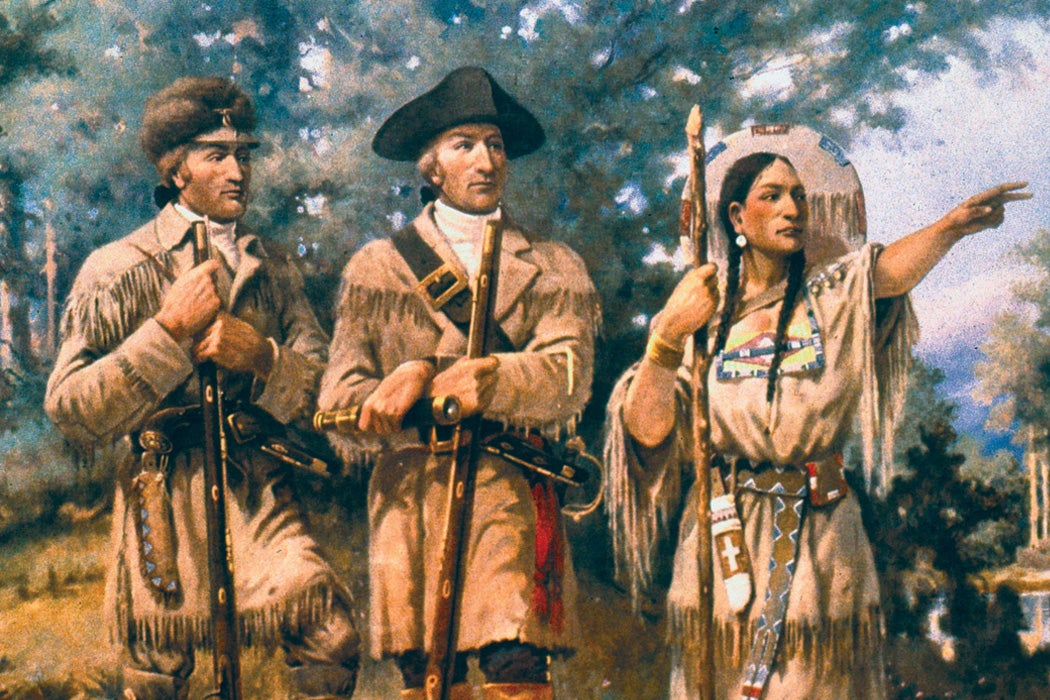Sacagawea is largely known to history as the Shoshone woman who joined the Lewis and Clark expedition and guided the explorers through the hostile wilderness with a baby strapped to her back.
But in the lionization of Sacagawea, the real person may have been buried behind the legend. Who was the woman behind the myth? Was she really the mastermind behind the Lewis and Clark expedition, singlehandedly leading the lost caravan of men across the land? Was she a gentle guide, pointing the way when asked? Was she neither, and simply pulled out of the annals of history in order to suit a certain political narrative?
The answer may just be a mix of all three.
Sacagawea had several merits to call her own, but they played well into a political agenda. Scholar Ronald W. Taber describes how a suffragist named Eva Emery Dye was searching for a symbol that would galvanize her movement, when she found Sacagawea. She wrote:
I traced down every old book and scrap of paper, but still was without a real heroine. Finally, I came upon the name of Sacajawea. I screamed, “I have found my heroine!” I then hunted up every fact I could find about Sacajawea. Out of a few dry bones I found in the old tales of the trip I created Sacajawea and made her a real living entity….The beauty of that faithful Indian woman with her baby on her back, leading those stalwart mountaineers and explorers through the strange land, appealed to the world…
Dye’s campaign to make Sacagawea a household name was wildly successful; the myth of Sacagawea took on a life of its own. As scholar E. G. Chuinard reports, Sacagawea was described by historians first as being an indispensable guide, then as making life and death decisions, and eventually as being responsible for glorious and “deathless deeds.”
The growing leniency with facts began to irk some writers and historians. Investigations into Sacagawea’s role in the expedition led to some uncharitable re-evaluations of the merits of her legacy. “The disparagers,” as Chuinard calls them, minimized her contributions, and emphasized historians’ infatuation with her, with one bitterly quipping, “many antiquaries and most trailmakers have believed that Lewis, Clark and their command were privileged to assist in the Sacajawea Expedition.”
Chuinard examines perspectives from Sacagawea’s admirers, disparagers, and ultimately, Lewis and Clark themselves, to unearth what Sacagawea really did contribute. Initially, the captains recruited Sacagawea’s husband (or captor, depending who you ask), the French Canadian fur trader Toussaint Charbonneau, but they seemed to be aware of her value as an interpreter.
Once a Week
She became integral, however, not only as a guide, but as a diplomat, convincing other parties that the travelers had no hostile intentions and communicating for them. On one occasion, she warned the leaders when another party they met was not to be trusted. Chuinard notes, “Her qualities of warmth, resourcefulness and courage were exhibited throughout the trials of the long trek to the Pacific and back to the Mandan Villages, and the journals of both men are replete with references to them.”
[Clark’s] regard for her was so great that he did not wait until he was comfortably at home in St. Louis to express himself. On August 20, 1806, he directed a letter to Charbonneau from “near the Ricara village”: “Your woman who accompanied you that long dangerous and fatiguing rout to the Pacific Ocean and Back deserved a greater reward for her attention and services . . . than we had it in our power to give.
The truth, unsurprisingly, is a combination of all the different stories: although she did not singlehandedly carry the expedition across North America, Sacagawea was indeed a valuable and irreplaceable team member.







